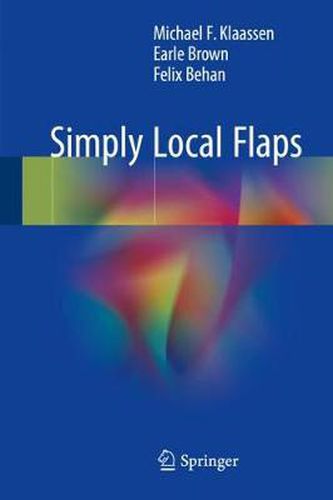Readings Newsletter
Become a Readings Member to make your shopping experience even easier.
Sign in or sign up for free!
You’re not far away from qualifying for FREE standard shipping within Australia
You’ve qualified for FREE standard shipping within Australia
The cart is loading…






This book provides a useful framework for categorizing local flaps on the basis of their composition, blood supply, geometry and means of transfer. The initial chapters are dedicated to the fundamentals - the basic procedures, how to get started, and technical tips - as well as advice on wound care and scar management.
These practical pointers are essential for students of plastic surgery, while also offering helpful refreshers for experienced practitioners. The subsequent chapters describe the types of flaps that are traditionally taught and the 10 most common flaps. There is also a practical guide to W-plasty, Z-plasty and their various modifications, which can be applied to both scar revision and the closure of the donor sites. The book also discusses the Keystone Perforator Island Flap (KPIF) and its application to various body sites, offering elegant solutions to some very tricky situations. In turn, the book’s final chapters are focused on assessment, decision-making an
d lessons learned - essentially, how to decide if a skin graft is the better choice, matters relating to aesthetics, and dealing with complications.
Rather than demonstrate exactly how to execute flaps, the book’s primary goal is to inspire students and trainees to think about the reconstructive problem, consider all patient-related and anatomical factors, and accurately recognize what can feasibly be achieved.
$9.00 standard shipping within Australia
FREE standard shipping within Australia for orders over $100.00
Express & International shipping calculated at checkout
This book provides a useful framework for categorizing local flaps on the basis of their composition, blood supply, geometry and means of transfer. The initial chapters are dedicated to the fundamentals - the basic procedures, how to get started, and technical tips - as well as advice on wound care and scar management.
These practical pointers are essential for students of plastic surgery, while also offering helpful refreshers for experienced practitioners. The subsequent chapters describe the types of flaps that are traditionally taught and the 10 most common flaps. There is also a practical guide to W-plasty, Z-plasty and their various modifications, which can be applied to both scar revision and the closure of the donor sites. The book also discusses the Keystone Perforator Island Flap (KPIF) and its application to various body sites, offering elegant solutions to some very tricky situations. In turn, the book’s final chapters are focused on assessment, decision-making an
d lessons learned - essentially, how to decide if a skin graft is the better choice, matters relating to aesthetics, and dealing with complications.
Rather than demonstrate exactly how to execute flaps, the book’s primary goal is to inspire students and trainees to think about the reconstructive problem, consider all patient-related and anatomical factors, and accurately recognize what can feasibly be achieved.